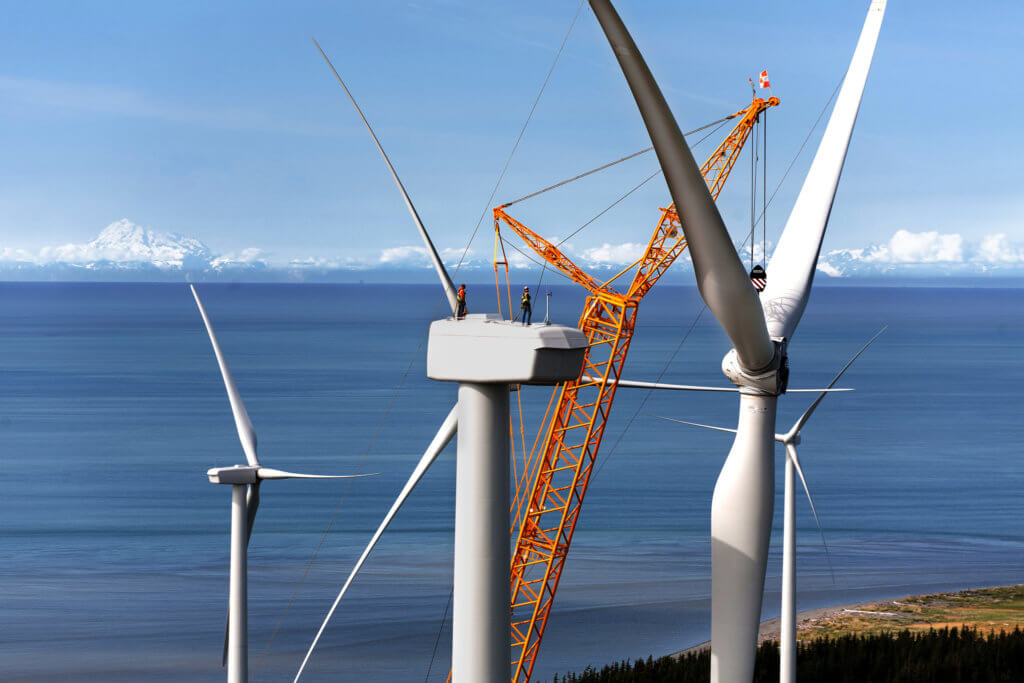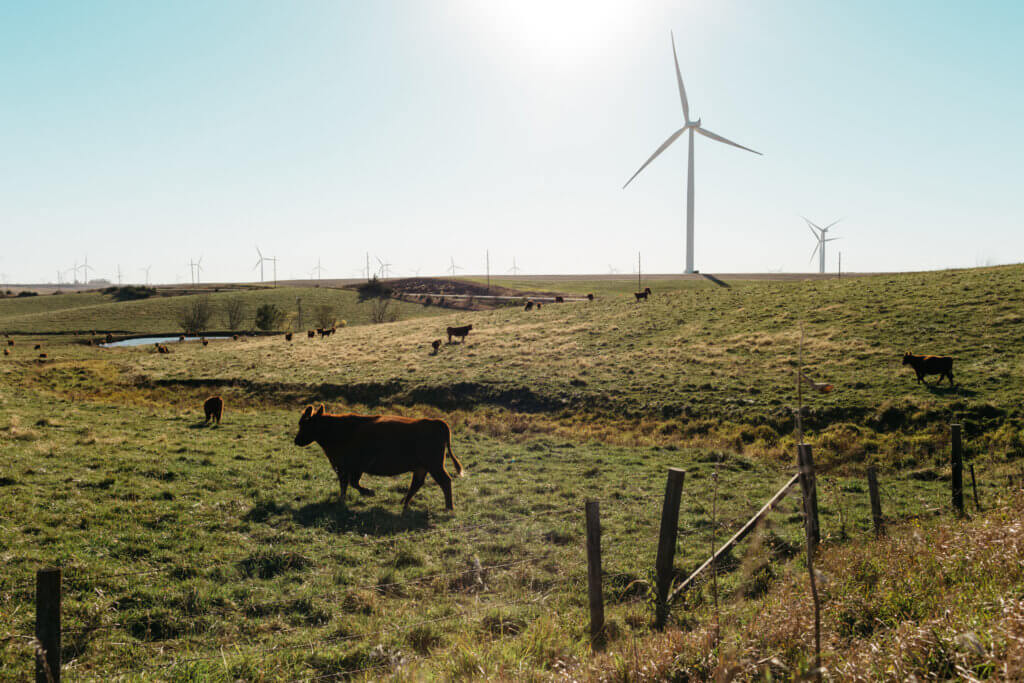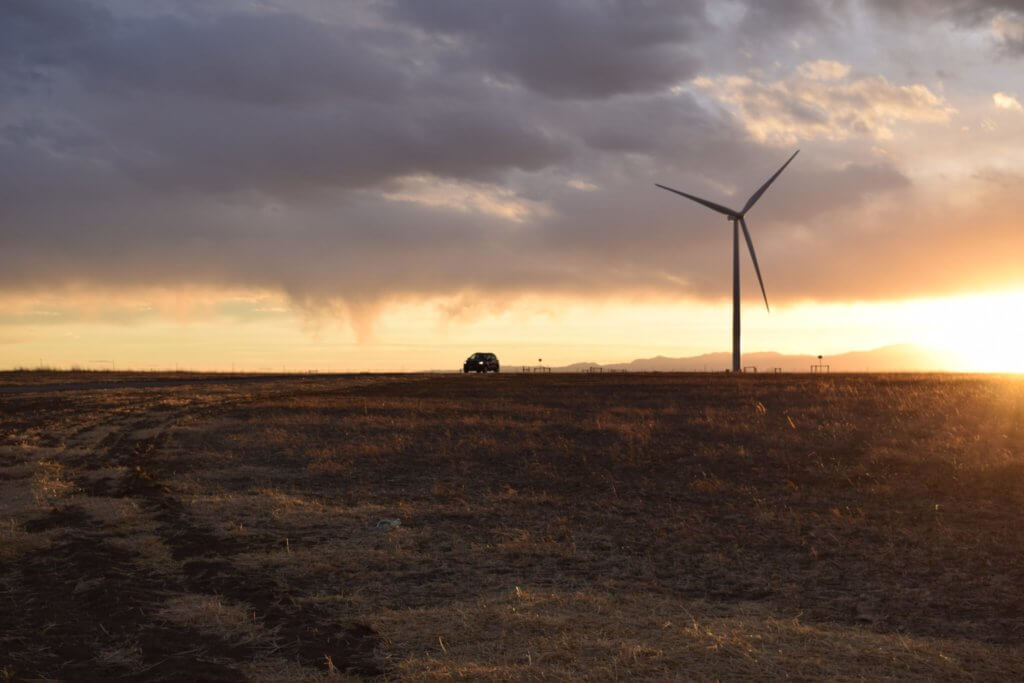WSJ's 'six myths about renewables': More good news
There are a lot of good stories to share about the affordability and reliability of wind power. While Wall Street Journal reporter Keith Johnson touches on several of them in a recent article (Six Myths About Renewable Energy, September 22), there’s even more good news about wind power.
More on Myth #1
Mr. Johnson recognizes wind power accounts for 4-5 percent of the nation’s electricity needs today, and the 60 GW of installed wind plants is impressive. It’s also worth noting that wind power provides more than 20 percent of electricity needs for Kansas, Iowa, and South Dakota (according to the U.S. Department of Energy) and more than 10 percent for nine states overall.
With the right policies in place, the Department of Energy has found that American wind power could supply 20 percent of our electricity needs by 2030.
It is true that “Wind farms produce only about one-third of their listed capacity, while a nuclear plant produces almost 100%,” however this overlooks the fact that wind’s output per unit of capacity is higher than the 24 percent average capacity factor for U.S. natural gas power plants, comparable to the approximately 40 percent capacity factor for hydroelectric dams, and approaching the 57 percent capacity factor for coal plants.

More on Myth #2
While adding more wind power is going to help reduce costs for ratepayers and help keep our air clean for everyone, a diverse energy mix is ultimately the best recipe for America’s energy needs.
Private sector leaders see wind power as an important means of diversifying the nation’s energy portfolio. In a letter to Congress late last year, Business for Innovative Climate & Energy Policy (BICEP), a combination of Fortune 500 firms and leading corporations, wrote, “[B]ecause wind prices can be locked in up front, businesses incorporating wind into their energy portfolios are better equipped to hedge market volatility in traditional fuels markets caused by supply shocks.”
In the same way a fixed-rate mortgage protects homeowners from fluctuations in interest rates, adding clean wind energy through fixed-rate utility contracts protects ratepayers from price shocks associated with fossil fuels and helps keep their energy costs low.
Wind energy earned special accolades from the head of the Texas utility system operator for producing as expected while fossil plants failed. This illustrates that a diverse portfolio of resources is essential to having a reliable and cost-effective power system, and wind energy is an important part of that mix.
Regarding concerns about where “to put all of those wind farms, solar arrays,” NREL’s analysis actually found that the wind and solar additions required for 80% renewables would disturb less land in the U.S. than is currently occupied by golf courses, 16% of that occupied by major roads, or about 2% of the land currently used for growing corn. 2008 analysis from the DOE found that 20% wind would use less land than is currently occupied by the city of Anchorage, Alaska.
More on Myth #3
It’s a fact that wind power prices are falling swiftly due to advances in science and technology among other reasons – including a majority of wind turbine parts being built right here in the USA. A recent AWEA blog “the top 5 signs that wind is becoming America’s most affordable energy choice” highlights all of the good news about wind’s affordability.https://acpqa.wpengine.com/blog/post/the-top-5-signs-that-wind-is-becoming-americas-most-affordable-energy-choice.
It’s important to remember that all forms of energy have received federal support in order to encourage domestic production. For example, a Management Information Services, Inc., report “60 years of energy incentives” found in 2011 that “Federal tax concessions for oil and gas are the largest of all incentives, amounting to nearly 80 percent of all tax-related allowances for Energy…Oil and gas received almost 60 percent of federal spending to support energy since 1950.”
And the financial services firm Lazard found wind power and other forms of renewable energy are already cost competitive with conventional energy resources in many markets, including the federal incentives that all forms of energy receive.
Plus, the PTC more than pays for itself in local, state and federal taxes over the life of wind project, allowed wind to drive $25 billion in private investment in our economy last year alone, and has helped wind build a whole new American manufacturing sector supporting thousands of jobs.
Wind power is used throughout the day, and in many coastal areas wind output is highest when electricity demand is highest. Every amount of produced wind energy is valuable, as it displaces the most costly and dirty power plants that are currently online.
More on Myth #4
Keith is on target in correcting this myth, with new technology, grid improvements, and a greater diversity in areas where wind power is being produced, wind energy’s reliability continues to improve. Wind curtailment in Texas will have fallen from 17% a few years ago to 4% last year to approximately zero by the end of this year. And, the more wind power that states take advantage of, the greater the economic and environmental benefits.
For example, U.S. Department of Energy data conclusively show that states that have ramped up their wind energy production over the last several years, like Colorado and Texas, have seen major reductions in air pollution (and CO2) emissions, and every independent utility system operator that has looked at the issue has found that adding wind energy to the grid results in significant reductions in fossil fuel use and emissions.
Collectively, installed U.S. wind power avoid avoids equals nearly 100 million metric tons of carbon emissions annually – that’s enough to take 18 million cars off the road.
More on Myth #5
Again, Mr. Johnson gets a lot right on this point. According to a report by the Texas Clean Energy Coalition, the combination of both natural gas and renewable energy forms like wind power means significant savings and provide an increased amount of reliability in our energy supply. The report analyzes the short- and long-term relationship between natural gas and renewable resources in the Electric Reliability Council of Texas (ERCOT) electricity market, which covers 85 percent of the state's electric load. The report states, “Low-priced natural gas and clean renewable resources are complementary, not competing, resources to displace other fuels over the long term.” Wind power also offers a hedge against future fuel price shocks by guarding against putting all of our electricity eggs in one basket. A recent Lawrence Berkeley National Laboratory study found, “Adding wind power to a portfolio of generating assets will partially hedge or insulate that portfolio against the risk of rising fuel costs over the long term.”
More on Myth #6
Wind jobs are real, well-paid jobs – mostly within the American manufacturing and construction sectors.
Wind bolsters America's economy through a supply chain of hundreds of manufacturing plants and more than 2,400 companies investing in all aspects. Total wind supported jobs now amounts to 80,000 employed by wind power and over the last six years, U.S. domestic production of wind turbine components has grown 12-fold, to more than 550 facilities in 44 states. That has shifted tens of thousands of manufacturing jobs from overseas back to the U.S.
A new study from Navigant Consulting found that with stable tax policy, the wind industry can grow to nearly 100,000 American jobs in the next four years, and support 500,000 American jobs by 2030 as forecast by the George W. Bush administration.
Photo credit: First Wind (Milford, Utah project)
Related articles on utility integration – cost:
Boosting renewable energy to 25% of electricity supply in Western U.S. would cut pollution, save consumers billions, September 24, 2013
Fact check: Wind power benefits consumers and environment, in Germany and U.S., September 20, 2013
Correcting fossil fuel industry misinformation about Germany's success with renewable energy, September 10, 2013
Fact check: Correcting math errors leads back to original finding: Wind power is affordable, reliable, August 20, 2013
Citing low costs, Xcel Energy plans 'significant increase' in wind purchases, July 11, 2013
Fact check: Exelon's faulty math (and logic) on wind's consumer benefits, June 11, 2013
Mid-American Energy announces $1.9-billion investment in additional wind generation capacity, May 8, 2013
Georgia Power to acquire 250 MW of wind; utility underscores strategy of portfolio diversity, April 29, 2013
New study answers columnist's questions, confirms wind energy's environmental benefits, April 19, 2013
Fact check: Sen. Alexander's claims about wind energy unfounded, March 27, 2013
Fact check: WSJ goes astray on California's integration of wind, February 28, 2013
Fact check: Pacific Research Institute report by Benjamin Zycher filled with inaccuracies, January 28, 2013
Despite flaws, DOE collaborative report shows more wind and transmission saves ratepayers money, January 23, 2013
Fact check: LA Times has faulty analysis on costs of integrating renewables, December 13, 2012
Lesser misstates facts at Heritage-Exelon anti-wind briefing, November 30, 2012
Fact check: Exelon-funded report inflates wind integration costs, November 2, 2012
Alabama Power 'doubles down' on wind, October 9, 2012
Facts about negative wholesale electricity prices and the Production Tax Credit, September 10, 2012
WINDPOWER 2012 Update: Transmission for wind in western U.S.: Lower cost, lower variability, June 5, 2012
Fact check: Elliott off target on wind and cost savings, June 4, 2012
New study: Wind power can save Midwestern consumers between $3 billion and $9.5 billion annually by 2020, May 23, 2012
Fact check: Lomborg lacking on wind's economics, emissions reductions, March 23, 2012
Fact check: Pavlak errs on wind integration, February 14, 2012
More savings for ratepayers in Southeast as Louisiana utility ups wind purchases, January 26, 2012
Fact check: Trzupek Washington Times op-ed off base on wind's cost, utility integration, January 25, 2012
Fact check: CIEP report on wind integration fatally flawed, January 25, 2012
Wind research generates savings for large utility, November 14, 2011
Xcel Energy: More wind, less cost, October 31, 2011
Fact check: Utility spokesperson errs on wind integration, July 5, 2011
Mythbusting fact: Wind power is valuable even if the wind doesn't blow all the time, April 20, 2011
Fact check: Bryce whiffs on wind power and Texas heat wave, August 12, 2011
War against a cost-saving super grid, May 1, 2010
EWEA study: Wind energy cuts carbon emissions, electricity prices, April 23, 2010
Inexpensive and predictable, January 26, 2010




